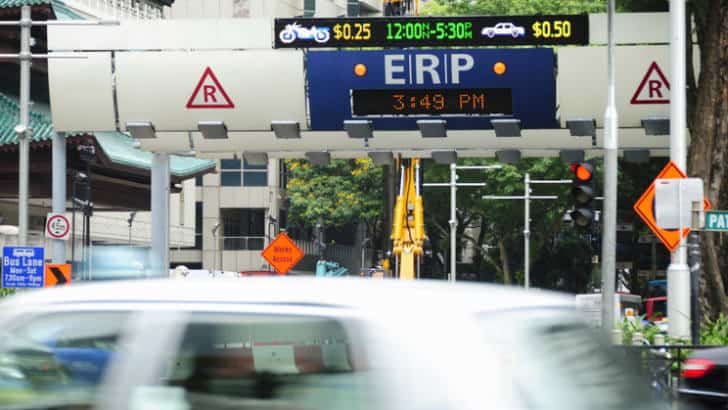- The Land Transport Authority will start the phasing in of the ERP 2.0 system’s new on-board unit (OBU) from 1 November 2023, beginning with company vehicles.
- The OBU provides ERP-related info, real-time traffic updates, and it may support additional future features such as paying parking and tolls.
- Motorists can choose to access the key OBU information via compatible mobile applications, and opt out of installing the touchscreen display.
LTA reports that they will soon begin installation of the new OBU for the ERP 2.0 system in phases starting with company vehicles from 1 November 2023.
The OBU will provide motorists with various features, and it’s designed to work with existing systems during the transition.
Moving to ERP 2.0: Why the Change?
The existing ERP system has served Singapore for 25 years since 1998.
The new ERP 2.0 system will bring in a more advanced Global Navigation Satellite System (GNSS)-based system to replace the old one.
However, LTA has no immediate plans to introduce the distance-based charging feature of ERP 2.0.
Installation of On-Board Unit (OBU)
The OBU will be provided free of charge to all eligible Singapore-registered vehicles during the installation period.
Vehicle owners will receive a notification from LTA to schedule for installation appointment.
The remaining vehicles will be scheduled for installation in batches based on their ages.
Motorists have the option to opt out of installing the touchscreen display, and display OBU information on their smartphones instead.


Features of ERP 2.0 System
Nifty features such as real-time traffic alerts and payments of parking and tolls could soon be part of our daily commute.
Software developers too have reasons to cheer, as LTA has released a software development kit (SDK) to develop mobile applications integrating ERP 2.0 data.
As the new OBU will communicate with ERP and car park gantries, it will eliminate the need for physical gantries, improving traffic data collection.
Issues with ERP 2.0 System
LTA has ensured that ERP 2.0 only collects data for traffic management and transport planning purposes.
All vehicle-specific data will only be used for payments, charges, and enforcement.
ERP gantries will only be gradually removed after the installation period, to facilitate a smooth transition.
Significance of ERP 2.0 system
The larger OBU system combines both ERP charges processing and GNSS for location determination.
This new system is set to provide reliable transactions across different vehicles and environments.
“LTA has also taken into consideration public feedback and developed an option for displaying OBU information on smartphones,” reports LTA.
So, are you ready to embrace this new technology?
How do you think it will impact your daily commute?
Let’s hear your thoughts.









